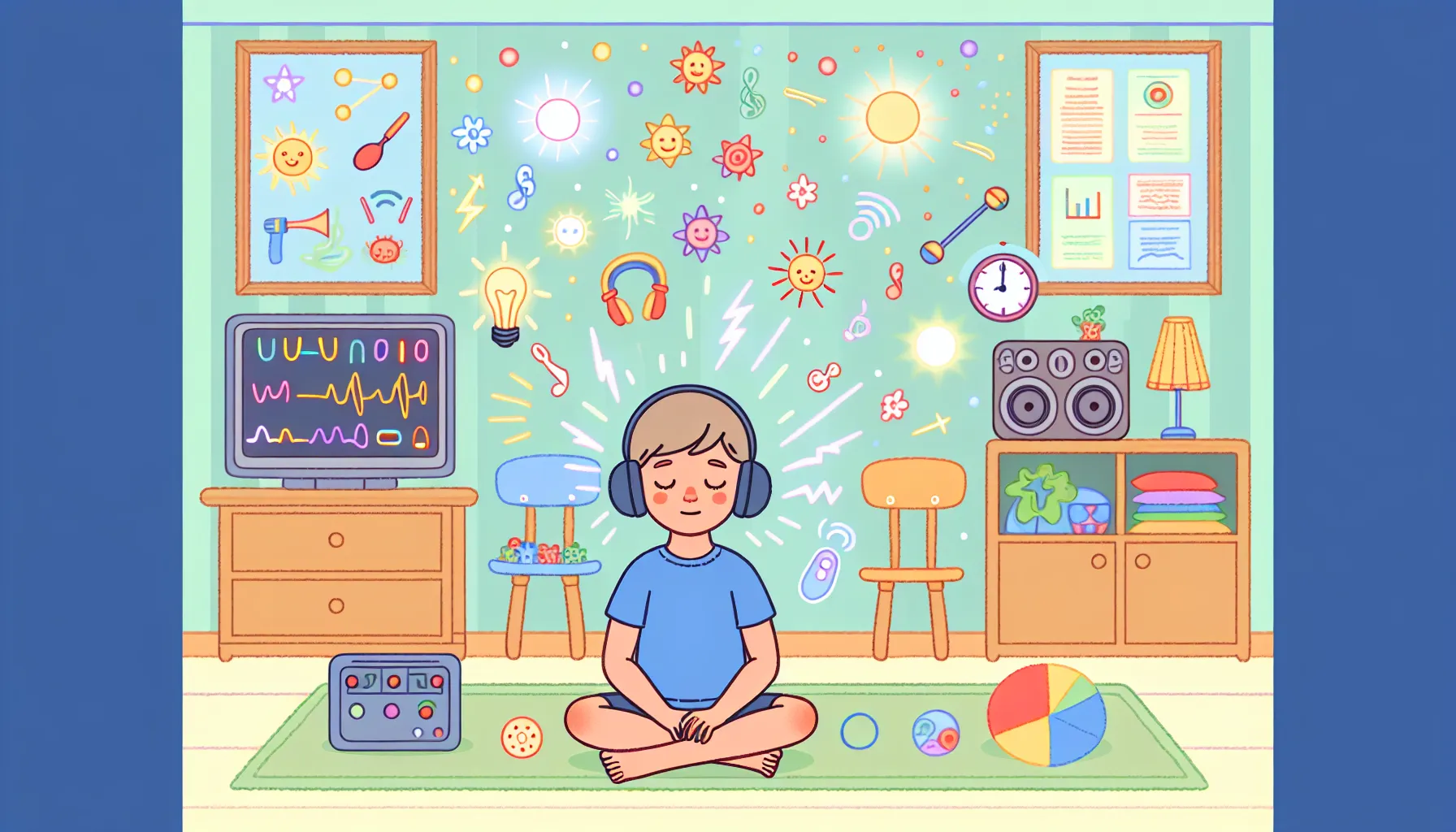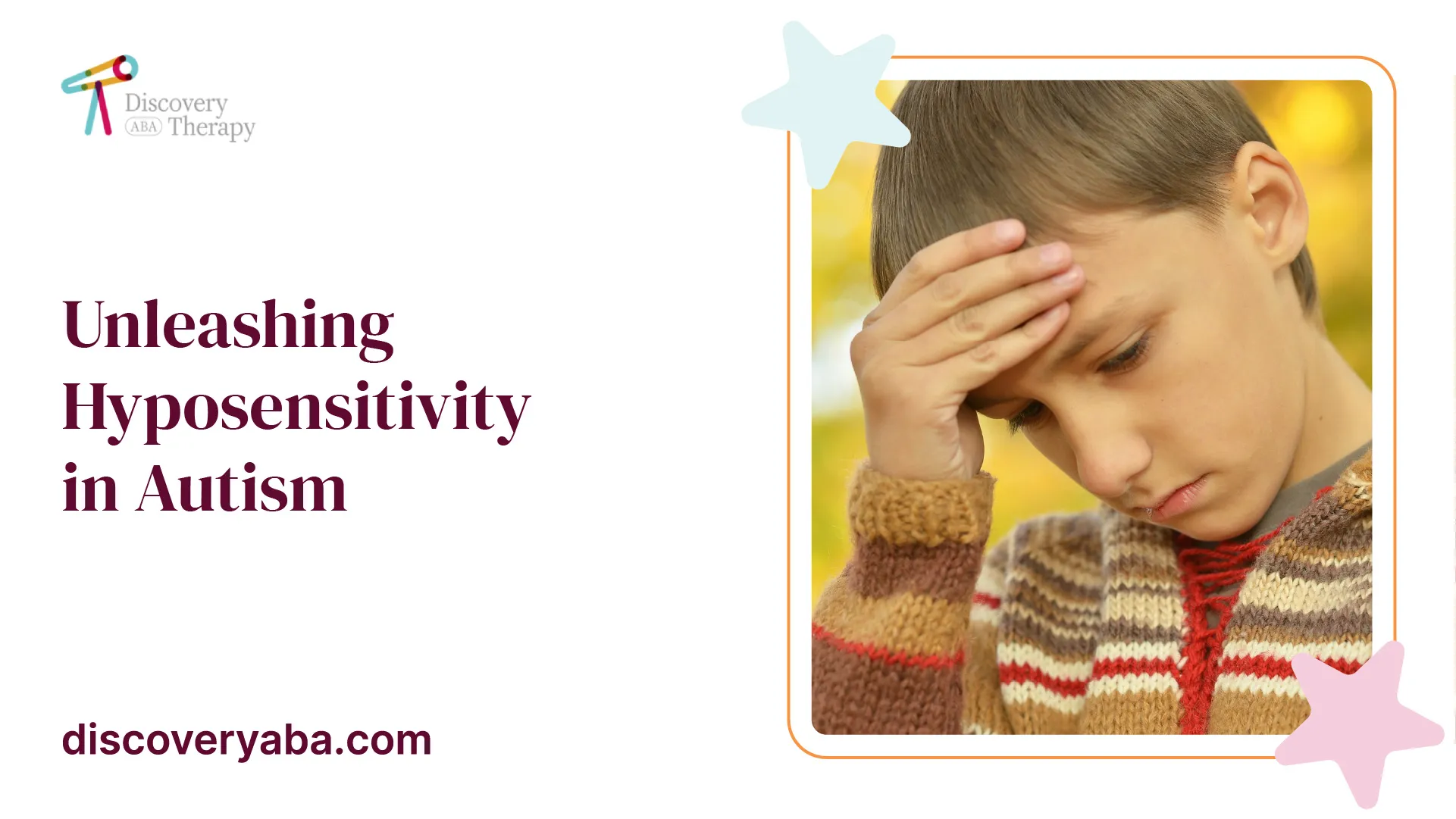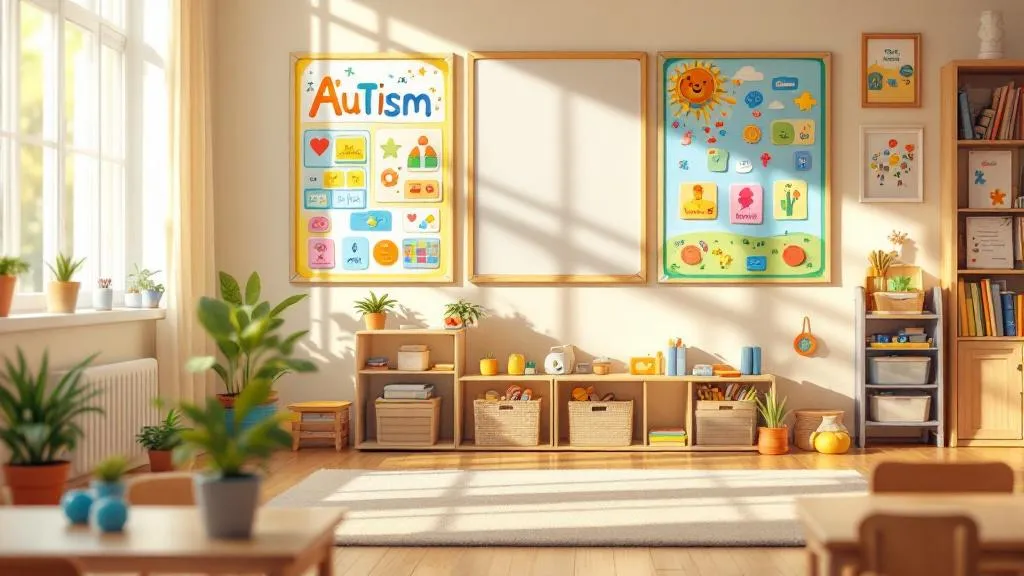Unleashing Hyposensitivity in Autism
Unleash the power of hyposensitivity in autism! Explore sensory differences, challenges, and therapies to support individuals.

Understanding Hyposensitivity in Autism
In the context of autism, hyposensitivity refers to a condition where individuals display an under-sensitive reaction to sensory stimulation. People with autism spectrum disorder (ASD) often experience sensitivities to various stimuli, including visuals, smells, sounds, touch, tastes, balance, awareness of body positions and movements, and internal body cues. It is important to note that individuals with ASD can have a mix of over- and under-responsiveness, known as hypersensitivity and hyposensitivity sensory processing disorder, respectively.
Sensory Processing in Autism
Sensory processing difficulties are prevalent in individuals with autism spectrum disorder. Over 90% of children with autism exhibit sensory abnormalities and symptoms across various sensory domains. These sensory processing and integration challenges can impact areas such as emotion, response to reward, language, communication, and other functions in individuals with autism. The Diagnostic and Statistical Manual of Mental Disorders (DSM–5) recognizes hyper- or hyporeactivity to sensory input as one of the ways in which restricted, repetitive patterns of behavior may manifest in individuals with autism.

Hyposensitivity vs. Hypersensitivity
Hyposensitivity and hypersensitivity represent opposite ends of the sensory processing spectrum in individuals with autism. While hypersensitivity refers to an intense reaction or sensitivity to sensory stimuli, hyposensitivity occurs when an individual displays an under-sensitive reaction to sensory stimulation. It is important to understand that an individual with autism can exhibit both hypersensitivity and hyposensitivity in different contexts.
By recognizing and understanding hyposensitivity in individuals with autism, we can better support and accommodate their unique sensory needs. Occupational therapy and other sensory-focused interventions can play a vital role in improving sensory processing and enhancing the overall well-being of individuals with hyposensitivity and autism spectrum disorder.
Characteristics of Hyposensitivity
Hyposensitivity, a common sensory processing issue in individuals with autism spectrum disorder (ASD), is characterized by an under-responsiveness to sensory stimulation. Hyposensitivity can manifest in different sensory domains, including auditory, olfactory, visual, and vestibular. Understanding these characteristics is crucial for recognizing and supporting individuals with hyposensitivity.
Auditory Hyposensitivity
In auditory hyposensitivity, individuals may have an under-sensitive reaction to sounds. They may not respond to or be bothered by loud noises that typically elicit a reaction in others. This can result in difficulties in recognizing or processing auditory information, such as spoken words or environmental sounds.
Olfactory Hyposensitivity
Olfactory hyposensitivity refers to a reduced sensitivity to smells. Individuals with olfactory hyposensitivity may have difficulty detecting or recognizing certain odors. They may not react strongly to strong or unpleasant smells that others find overwhelming.
Visual Hyposensitivity
Visual hyposensitivity involves an under-responsiveness to visual stimuli. Individuals with visual hyposensitivity may not notice or be affected by certain visual aspects of their surroundings. They may have difficulty perceiving details or may not be as visually aware as others.
Vestibular Hyposensitivity
Vestibular hyposensitivity relates to under-responsiveness to vestibular stimuli, which are responsible for the sense of balance and spatial orientation. Individuals with vestibular hyposensitivity may have a reduced awareness of their body positions and movements. They may seek out activities that involve spinning, swinging, or other forms of movement to stimulate their vestibular system.
It is important to note that individuals with hyposensitivity may display a combination of both hypersensitivity and hyposensitivity in different contexts. These characteristics can vary among individuals, and each person may have a unique profile of sensory responses.
Recognizing the characteristics of hyposensitivity is crucial for understanding the sensory experiences of individuals with ASD. By acknowledging and accommodating their sensory needs, we can create environments that support their comfort and well-being.
Impact and Challenges of Hyposensitivity
Individuals with hyposensitivity may experience unique challenges and difficulties due to their sensory processing differences. These challenges can manifest in various ways, affecting their motor skills, sensory seeking behaviors, and leading to sensory overload.
Motor and Coordination Difficulties
Hyposensitivity can impact an individual's motor skills and coordination. They may exhibit clumsiness and have trouble with fine motor tasks, such as buttoning a shirt or tying shoelaces. The reduced sensory input can make it challenging for them to perceive their body's position in space, affecting their balance and coordination. As a result, activities that require precise movements, such as handwriting or playing a musical instrument, may be more challenging for individuals with hyposensitivity.
Sensory Seeking Behaviors
Individuals with hyposensitivity often engage in sensory seeking behaviors. They may actively seek out intense sensory stimuli to compensate for their reduced sensory input. This can include seeking out loud sounds, strong tastes, intense touch or hugging, and vestibular input. These sensory-seeking behaviors help them regulate their sensory experiences and provide the stimulation they need. However, these behaviors may be misunderstood or seen as disruptive in certain settings, such as the workplace, potentially leading to the suppression of these behaviors.
Sensory Overload
While individuals with hyposensitivity have reduced sensitivity to certain stimuli, they can still experience sensory overload. Sensory overload occurs when an individual is overwhelmed by intense sensory stimuli, which can lead to feelings of anxiety, a need to escape the situation, difficulty communicating, or even meltdowns. The effort required to cope with sensory sensitivities in daily life can gradually build up, eventually leading to sensory overload. This overload can be triggered by unexpected loud noises or a combination of various sensory inputs. The experience of sensory overload can be exhausting and overwhelming for individuals with hyposensitivity.
Understanding the impact and challenges associated with hyposensitivity is crucial in providing appropriate support and accommodations for individuals on the autism spectrum. By recognizing and addressing these challenges, we can create environments and strategies that promote inclusion and help individuals with hyposensitivity thrive in their daily lives.
Accommodations and Therapies for Hyposensitivity
To support individuals with hyposensitivity, various accommodations and therapies can be implemented to help them navigate and adapt to sensory experiences. These approaches aim to provide the necessary support and create an environment that promotes sensory regulation and comfort. Three key strategies include sensory integration therapy, sensory gyms and equipment, and environmental modifications.
Sensory Integration Therapy
Sensory integration therapy is a recommended treatment for individuals with hyposensitivity. It focuses on helping individuals adjust to sensory regulation through movement and physical contact [1]. This therapy aims to enhance sensory-motor processes of registration and modulation, allowing individuals to better integrate and process sensory information.
One widely recognized approach within sensory integration therapy is Ayres Sensory Integration Therapy (SIT). SIT has been found to lead to changes in key neural substrates, such as the posterior cingulate cortex, the insula, the thalamus, and the amygdala [4]. This therapy can be implemented by trained occupational therapists who use various activities and techniques to promote sensory integration and regulation.
Sensory Gyms and Equipment
Sensory gyms equipped with specific sensory equipment can be beneficial for individuals with sensory processing disorders like hyposensitivity. These gyms provide a safe and controlled environment where individuals can explore and engage with sensory stimuli. The equipment used in sensory gyms is designed to promote sensory integration, body awareness, and coordination.
Engaging in physical activities within sensory gyms can help individuals with hyposensitivity adjust to sensory experiences and develop better sensory processing abilities. Physical activity has been shown to reduce sensory sensitivity in children with autism spectrum disorder (ASD) and can result in structural changes in the brain, particularly in the anterior cingulate cortex (ACC). Sensory gyms provide a structured and supervised setting for individuals to participate in beneficial physical activities.
Environmental Modifications
Modifying the environment is another important aspect of accommodating individuals with hyposensitivity. Creating an environment that is conducive to sensory regulation can greatly support individuals in managing their sensory experiences. Environmental modifications can include adjusting lighting, reducing background noise, providing comfortable seating, and incorporating sensory-friendly spaces.
By reducing sensory distractions and ensuring a calm environment, individuals with hyposensitivity can feel more comfortable and better able to engage with their surroundings. Sensory-friendly spaces, such as quiet rooms or designated areas with sensory materials, can also provide a retreat where individuals can regulate their sensory experiences as needed.
Implementing accommodations and therapies that address hyposensitivity can significantly improve the sensory well-being and overall quality of life for individuals with autism spectrum disorder. By understanding sensory differences and providing appropriate support, we can create inclusive environments that cater to the unique needs of individuals with hyposensitivity.
Hyposensitivity and Autism Spectrum Disorder
Understanding the relationship between hyposensitivity and Autism Spectrum Disorder (ASD) is crucial for comprehending the sensory experiences of individuals on the autism spectrum. This section explores the prevalence of hyposensitivity in ASD and highlights the sensory abnormalities often observed in individuals with this condition.
Prevalence and Association
Hyposensitivity, a form of sensory processing disorder, is commonly associated with ASD. People with ASD often exhibit sensitivities to various stimuli, including visuals, smells, sounds, touch, tastes, balance, awareness of body positions and movements, and internal body cues. It is estimated that over 90% of children with autism experience sensory abnormalities and symptoms in various sensory domains [5].
However, it is important to note that not everyone with sensory processing disorders (SPDs), including hyposensitivity, has ASD. This indicates that SPD can occur independently of other disorders like ASD. The relationship between hyposensitivity and ASD further emphasizes the intricate nature of sensory processing differences in individuals on the autism spectrum.
Sensory Abnormalities in ASD
Sensory abnormalities are a hallmark of ASD. These abnormalities can manifest in various sensory domains and have the potential to impact areas such as emotion, response to reward, language, communication, and other functions in individuals with autism spectrum disorders. However, it is worth noting that there is no standardized method to determine or classify sensory difficulties or abnormalities in individuals with autism [2]. Many within the autism community advocate for the inclusion of sensory processing disorder in the diagnostic criteria, such as the DSM-5, to better address the sensory challenges experienced by individuals on the autism spectrum.
Understanding the prevalence of hyposensitivity and the sensory abnormalities associated with ASD provides valuable insights into the sensory experiences of individuals on the autism spectrum. By recognizing and addressing these sensory differences, we can provide better support and accommodations to help individuals with ASD navigate their daily lives more comfortably.
Supporting Individuals with Hyposensitivity
Supporting individuals with hyposensitivity is crucial in helping them navigate the challenges that arise from their sensory differences. Understanding these sensory differences and providing appropriate accommodations can greatly improve their quality of life.
Understanding Sensory Differences
Sensory difficulties can be some of the most challenging symptoms for individuals on the autism spectrum to manage. According to the Diagnostic and Statistical Manual of Mental Disorders (DSM–5), hyper- or hyporeactivity to sensory input is one of the ways in which restricted, repetitive patterns of behavior may manifest in individuals with autism. Sensory aspects that may seem normal to individuals without autism can be overwhelming or upsetting for those with autism. For example, sounds that appear loud, bright lights causing agitation, or gentle touches feeling unpleasant can contribute to anxiety and unexpected behaviors.
By understanding the unique sensory experiences of individuals with hyposensitivity, we can create a supportive environment that respects their needs and minimizes potential triggers. This may involve modifying the environment, establishing new habits or routines, and using tools and strategies to help individuals cope with their sensory sensitivities.
Occupational Therapy for Sensory Needs
Occupational therapy plays a vital role in supporting individuals with hyposensitivity and other sensory needs. Occupational therapists are trained professionals who can help individuals with autism manage their environments, develop motor coordination and balance, address sensitivities related to eating or swallowing, and cope with sensory sensitivities.
Through a holistic approach, occupational therapists work with individuals to develop personalized strategies and interventions. These may include sensory integration therapy, which aims to improve sensory processing and integration through structured activities and exercises. Occupational therapists can also provide tools and strategies that support the sensory needs of individuals with autism, such as sensory gyms and equipment tailored to address specific sensory challenges.
By working closely with occupational therapists, individuals with hyposensitivity can learn effective ways to manage their sensory differences, enhance their overall sensory processing, and improve their daily functioning.
Supporting individuals with hyposensitivity requires a comprehensive understanding of their unique sensory profile and the implementation of appropriate accommodations and therapies. By recognizing and addressing their sensory needs, we can create a supportive and inclusive environment that allows individuals with hyposensitivity to thrive.
References
- https://www.webmd.com/brain/autism/what-is-hyposensitivity
- https://www.autismparentingmagazine.com/hyposensitivity-among-autistic-individuals/
- https://www.autismspeaks.org/sensory-issues
- https://www.ncbi.nlm.nih.gov/pmc/articles/PMC9601143/
- https://doi.org/10.1007/s10803-006-0218-7
- https://thespectrum.org.au/autism-strategy/autism-strategy-sensory/
Does Your Child Have An Autism Diagnosis?
Learn More About How ABA Therapy Can Help
Find More Articles
Contact us
North Carolina, Nevada, Utah, Virginia
New Hampshire, Maine
Arizona, Colorado, Georgia, New Mexico, Oklahoma, Texas
.avif)




































































































